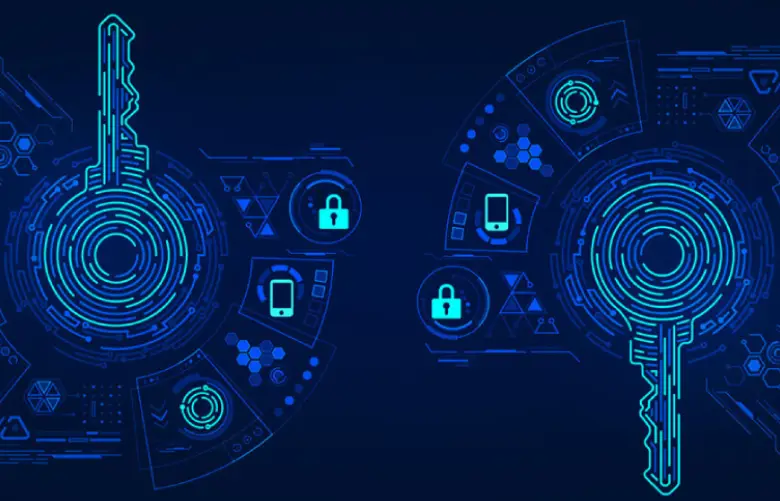Effective Management of keys is of utmost importance in symmetric encryption, encompassing the secure creation, distribution, retention, rotation, and eventual disposal of encryption keys. When dealing with extensive systems, it’s essential to address key Management meticulously.
This entails considerations such as large-scale system requirements and an exploration of various types of symmetric key cryptography.

Explore our blog on Demystifying the Super Key Concept in DBMS now!
Key Management Considerations
Key Generation: Use a secure random number generator to create strong encryption keys with enough entropy to resist attacks.
Key Distribution: Securely share keys between authorized parties. Avoid transmitting keys in plaintext; use secure key exchange protocols like Diffie-Hellman.
Key Storage: Protect keys from unauthorized access. Use hardware security modules (HSMs) or secure key vaults to store keys securely.
Key Usage Policies: Define policies regarding who can access and use keys, and under what conditions. Implement proper access controls and permissions.
Key Rotation: Regularly change keys to minimize the impact of a compromised key. This requires planning for seamless transitions to new keys.
Key Deletion: Properly dispose of keys that are no longer needed. Ensure that deleted keys cannot be recovered.
Key Escrow: In some cases, especially for data recovery purposes, you might need to escrow a copy of the keys securely.
Key Auditing and Monitoring: Monitor key usage and access patterns to detect anomalies or potential breaches.
Key Backup and Recovery: Implement processes to back up keys and recover them in case of hardware failures or other emergencies.
Key Lifecycle Management: Implement a well-defined key lifecycle that covers generation, distribution, usage, rotation, and retirement.
Attribution Data
Digital Content: In digital media, attribution data could include information about the creator of an image, video, or audio file. This data helps give credit to the original creator and can be important for respecting copyright and intellectual property rights.
Cybersecurity and Digital Forensics: Attribution data might be crucial in investigating cyberattacks or online incidents. It involves identifying the origin of malicious activities or hacking attempts to hold responsible parties accountable.
Open Source Software: In open-source projects, attribution data ensures that contributors receive proper credit for their work. Many open-source licenses require that attribution is maintained when the code is used or distributed.
Academic and Research Work: Attribution data is essential in academic and research contexts to properly credit the authors of studies, papers, and research findings. It helps in building upon existing knowledge and acknowledging scholarly contributions.
Key Management at large scale
Managing keys at a large scale can be more complex due to increased volumes of keys and the potential for more points of vulnerability. Here are some additional considerations for symmetric key cryptography:
Automation: Implement automated key management processes to handle the scale efficiently and reduce the risk of human errors.
Centralization: Consider centralizing key Management to ensure consistent policies and procedures across the organization.
Hierarchical Key Management: Use hierarchical approaches to manage keys, where different levels of keys are used for different purposes, aiding in security and Management.
Key Partitioning: Partition keys are based on different factors, such as departments, projects, or geographical regions, to limit exposure in case of a breach.
Scaling Key Storage: Ensure the chosen solution can handle the increased load and redundancy requirements.
Symmetric-key encryption types
Symmetric key cryptography uses the same key for both encryption and decryption. There are two main types:
Block Ciphers encrypt data in fixed-size blocks (e.g., 128 bits) using algorithms like AES (Advanced Encryption Standard).

Stream Ciphers encrypt data continuously, often one bit or byte at a time. They are efficient for real-time communication and are used in various encryption protocols.










